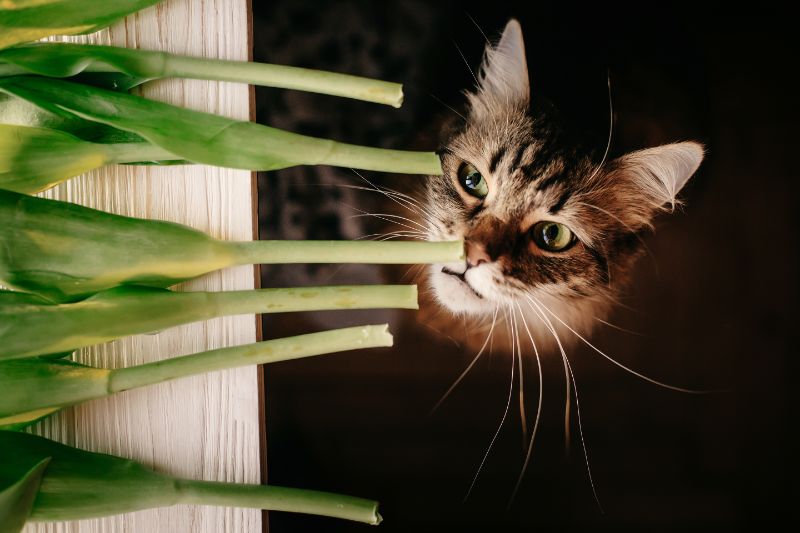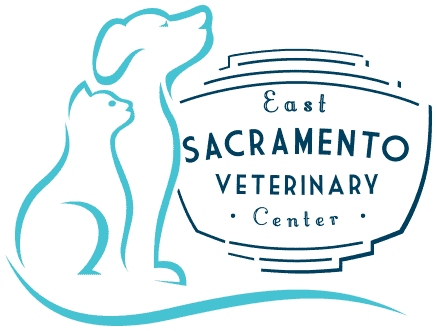Pet Poison Awareness: Take Steps to Prevent an Emergency

From the cupboards to the garage, there are many possible pet poisons that can be intriguing to a curious pet. Things we may think they would never investigate, they will. In fact, each year there are more than 180,000 pet poisonings. The effects of a pet poisoning can range from mild symptoms to critical, but even the mildest of toxicity is still frightening (and potentially expensive to treat).
March is national Pet Poison Prevention Awareness month and your friends at East Sacramento Veterinary Center want pet owners to be informed about pet poisonings and potential toxins. Through education, awareness, and vigilance, our hope is to decrease our beloved fur friends’ exposure to poisons.
Common Household Toxins
It may come as a surprise to you, that there are dozens of items in the home that pose a threat to pets. Pets explore the world with their nose and mouth. If something smells interesting or good to them, they are liable to take a bite. Especially if the item is some form of human food.
The Pet Poison Helpline receives hundreds of thousands of calls each year about pet toxicity. Some of the more common items that poison pets include:
- Chocolate – Dark and bakers grade chocolate are more toxic. The main toxic chemical found in chocolate, other than caffeine, is theobromine.
- Grapes and raisins (one of the more surprising food items toxic to pets)
- Xylitol (found in sugar-free candy and gum)
- Medications like acetaminophen, antidepressants, and ADHD/ADD medications
- Household cleaners
- Alcohol and marijuana (and vaping liquid)
- Rodenticide (rat and mice killer)
- Essential oils, including the fumes
Medications are particularly easy for pets to get into because they are prevalent in our homes and are easy to drop to the floor. We also are seeing a rise in toxicity from vaping e-juice and their paraphernalia.
What’s Growing in Your Garden?
Toxic plants are found in many parks, gardens, and lawns. The ASPCA has an extensive list of non- and toxic plants that can help you decide what to purchase before the planting season arrives.
Here are some of the more poisonous of foliage, trees, and flowers.
- Yew
- Azalea
- Daffodil and crocus bulbs
- Sago palm
- Lilies (extremely toxic to cats)
- Ivy
- Oleander
Some mulch and amenders like rose food and cocoa mulch are toxic. Avoid these and pesticide and fertilizers, opting for organic, pet-friendly lawn and garden products.
Signs of Pet Poisoning
The signs of poisoning can take time to emerge, depending on the type of toxins and the amount your pet ingested. If you know your pet ate something that is toxic, don’t wait for symptoms, since some symptoms can only come on when your pet’s condition is dire. Some general symptoms of pet poisoning can include:
- Vomiting
- Diarrhea
- Drooling
- Restlessness or pacing
- Lack of appetite
- Lethargy
- Pale gums
- Excessive thirst
- Difficulty breathing
- Tremors
- Seizures
Act quickly if these signs are present by phoning us or going to your nearest emergency clinic.
Pet Poison Prevention
Now that you know some of the toxins to be aware of, staying two steps ahead of your furry one is imperative to keeping them safe. To prevent a pet poison emergency…
- Make sure all medications are accounted for and stored in a medicine cabinet when not in use.
- Cover all trash bins and compost.
- Learn the common pet toxins, including food, and make sure to keep them out of your pet’s reach.
- Switch to eco- and pet-friendly products, whether it is household cleaners or natural pesticides.
- Never use rat and mice poisons.
Pet Poison Prevention Awareness Month is a good reminder for all pet lovers to ensure the safety of our pets. With some precaution and knowledge, your pet will be better protected in the home, yard, and public.
For more information on pet poison prevention, or to schedule an appointment, please do not hesitate to call.
